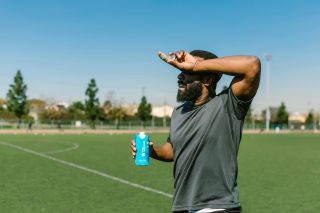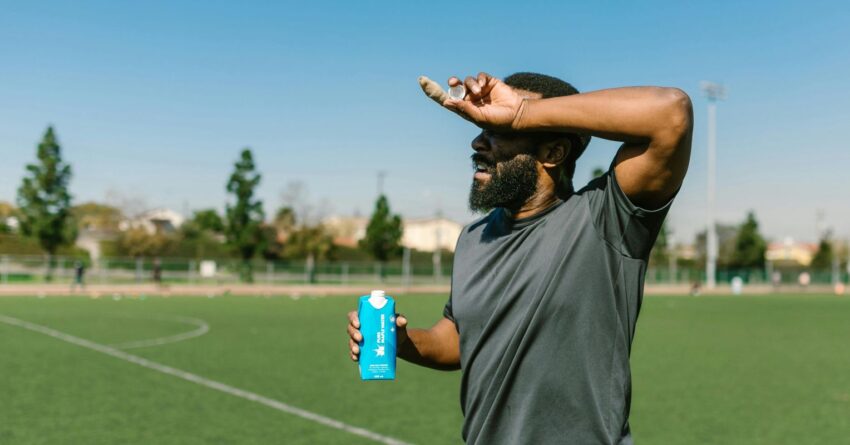
Source: RDNE / Pexels
It’s the first day of summer, and temperatures are already soaring across North America, Europe, North Africa, and the Middle East. In weather like this, antidepressant users need to take extra precautions not to overheat.
According to the Centers for Disease Control and Prevention (CDC), several classes of antidepressants can interfere with the body’s ability to cool itself down. These include selective serotonin reuptake inhibitors (SSRIs) like Prozac, serotonin and norepinephrine reuptake inhibitors (SNRIs) like Cymbalta, and tricyclic antidepressants (TCAs) like Norpramin.
Antidepressants are prescribed not just for depression but for conditions including anxiety, chronic pain, insomnia, and migraine. Around 1 in 7 American adults has taken an antidepressant in the past 30 days, and most aren’t aware their medications put them at higher risk of heat-related illness.
If you or someone in your family takes antidepressants, here’s what you need to know to stay safe this summer.
Why do antidepressants increase sensitivity to heat?
People with mood disorders like depression and anxiety often have lower levels of the neurotransmitter serotonin, and most antidepressants work by preventing the body from reabsorbing this neurochemical, so that levels in the brain stay high.
Serotonin, though, doesn’t just influence our moods. It also affects the hypothalamus, the brain region responsible for regulating body temperature.
High serotonin levels can cause the hypothalamus to raise the body’s internal thermostat, as though we were cold and actually needed to warm up, not cool down. In response, the body starts burning extra energy to create more heat (a process called metabolic thermogenesis).
Under the influence of antidepressants, the hypothalamus can also increase or reduce the production of sweat. Either alternative can lead to problems. Too little sweat, and the skin doesn’t get cooled down as the sweat evaporates, one of the most important mechanisms for lowering body temperature in high heat. Too much sweat, and it becomes impossible to replace all that fluid as quickly as it’s being lost, leading to dehydration. In a dangerous combination, some antidepressants also suppress a person’s sense of thirst, making them even more likely to become dehydrated.
Antidepressants can further increase the risk of heat-related illness by disrupting the hypothalamus’ control over kidney function. Sodium levels in the blood fall, creating an electrolyte imbalance that makes it difficult to rehydrate safely.
What to watch out for
Because of the increased risk, anyone taking antidepressants should familiarize themselves with the symptoms of and treatment for heat exhaustion and heat stroke.
Signs of heat exhaustion:
- Elevated body temperature
- Heavy sweating
- Headache
- Nausea
- Dizziness
- Weakness
- Thirst
- Irritability
- Decreased urine output
To treat heat exhaustion, rest in a cool place, like a spot in the shade or an air-conditioned building. If you can, lie down and elevate your legs to keep blood flowing to your heart. Remove unnecessary clothing and lower skin temperature with cold compresses, a cool-water bath, or a soak in a pond or stream. Take frequent sips of water or a sports drink.
If symptoms don’t improve, contact a health professional. Heat exhaustion can develop into heat stroke, which is life-threatening. Signs of heat stroke include:
- Very high body temperature
- Profuse sweating or hot, dry skin
- Confusion, slurred speech, or altered mental state
- Seizures
- Loss of consciousness
Heat stroke is a medical emergency that can be fatal if left untreated. If you or someone around you has symptoms of heat stroke, call 911.
While waiting for medical attention, the CDC recommends using quick-cooling methods, like a cold water or ice bath. If a bath isn’t available, soak clothing with cold water, or place cool cloths or ice on the head, neck, armpits, and groin. Circulate air around the person with heat stroke to speed cooling.
How to prevent heat-related illness
- Keep up with the forecast. Stay current on daily highs and heat advisories so you can plan ahead.
- Dress in lightweight, loose-fitting clothing. Breathable clothing allows sweat to evaporate, which helps to lower your body temperature.
- Apply sunscreen. Sunburns impair your body’s ability to cool itself. Apply a broad-spectrum sunscreen before outdoor activity, reapply every two hours, and wear a breathable hat to protect your scalp.
- Stay hydrated. Drink water or sports drinks throughout the day, and make sure to eat regularly to maintain your electrolytes. Avoid alcohol and energy drinks, which can contribute to dehydration.
- Limit time outdoors. On hot days, don’t spend too much time spend outside, especially in direct sunlight. Opt to go out during the cooler morning and evening hours instead of the high heat of midday.
- Avoid physical activity. If you have to do physical activity in extreme heat, take extra breaks and drink lots of water (the CDC suggests one cup every 15-20 minutes). Give your body time to acclimatize, working only a short amount of time in the hot environment at first and gradually increasing your exposure over several days.
- Keep your home cool. Open windows at night to let cool air in and shut them during the day to keep warm air out. Keep curtains and blinds closed to block out the sun, and opt for meals that don’t need to be cooked in the oven.
- Find nearby air conditioning. If you don’t have air conditioning and your home is uncomfortably hot even with these precautions, look for an air-conditioned library, community center, shopping mall, or cooling center where you can spend the day.
- Ask your doctor about adjusting your antidepressant dose. If you’re concerned about your level of heat sensitivity, talk to your doctor about adjusting the dosage of your antidepressants to better balance their benefits with these side effects.
Apart from these suggestions, here are five more offbeat tricks for cooling down in high heat.
